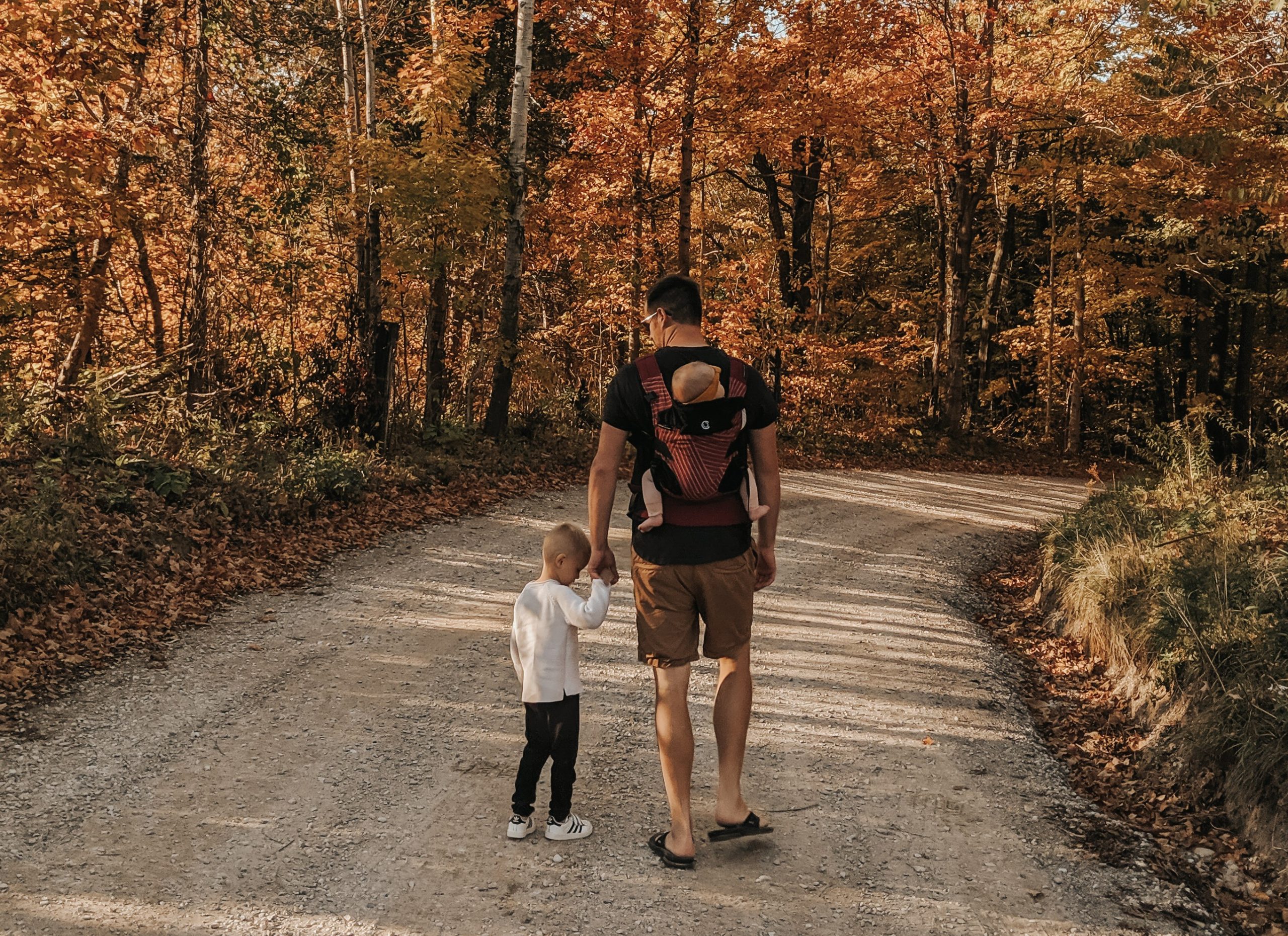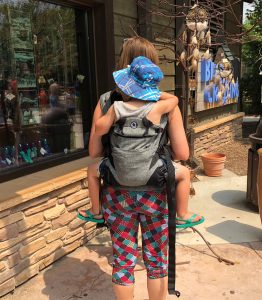 As much as I adore the snuggles of a baby cuddled up in a front carry, once my babies are developmentally ready for a back carry, it is so freeing! I tend to walk around bending over and reaching for things just for fun، enjoying the freedom of movement.
As much as I adore the snuggles of a baby cuddled up in a front carry, once my babies are developmentally ready for a back carry, it is so freeing! I tend to walk around bending over and reaching for things just for fun، enjoying the freedom of movement.
Why back carry?
As some babies start to get older, they like to be able to look around but also cuddle into an adult when desired. A back carry allows a baby to see out and where the child is going while also having the ability to hide their face in the adult’s back as needed. From the caregiver’s perspective, back carrying can be very freeing. Suddenly you have more of a range of motion to bend over (pick up items on the floor, do laundry), reach up high (put away dishes, grab items off a shelf) or carry large items. As a child gets older, it can also be easier on your body to back carry as our backs tend to be strong and it is less weight pulling the caregiver off balance. For caregivers who have more than one child, putting an older child on the back can free up arms or the front for a young child who also needs to be carried.
Can I do anything while back carrying? 
The general rule of thumb while babywearing is that you can do anything while babywearing that you would do while holding a baby. This isn’t a hard and fast rule because using a carrier can help in situations where carrying in arms would be uncomfortable. This could include going on an easy hike, walking a 5K, or participating in low impact workouts such as babywearing dance or tae kwon do.
More extreme activities such as bike riding, horseback riding, and skating are not safe because baby cannot be protected in the event of a fall. Caution should also be used during cooking because babies can knock over or grab hot or sharp items and oil can splatter, but preparing ingredients should not be a concern. Participating in lawn care should also be done with caution. Mowing the lawn can be unsafe because of rocks and sticks that can fly up and injure a baby; however, pulling weeds can be a great workout!
Can I back carry with any carrier?
Every carrier has its own rules based on the structure of the carrier and manufacturer’s testing. It is important to refer to your carrier’s manual to ensure it can be used for back carrying. Most buckle carriers (soft-structured carriers) have the ability to be worn on the back. Some buckle carriers, however, are only designed for the front because of the structure of the carrier and it would be unsafe to backwear in one not designed for it.
Is there a weight limit to back carrying?
As with many other answers, this will depend on the carrier. Every carrier has been tested to certain specifications and those will be listed in the manual and on the safety tags.
When is a baby ready to be worn in a back carry? 
First, ensure that you read the instructions of your carrier manual. Each carrier has different recommendations regarding back carriers (size, weight, settings, etc). Second, there are developmental milestones to look for. When a baby is on the front, it is easy to monitor the breathing and airway. Once a baby has moved to a back carry, it can be more difficult to do so. Therefore, when using a buckle carrier with a typically developing baby, they should be able to sit unassisted. Because the baby on the back cannot be closely monitored, we need to ensure that if the baby slumps or slouches, baby has the ability to sit upright again. When using other types of carriers with a less structured design such as a woven wrap or meh dai, the guidelines will differ.
Older children with special needs can be worn in a back carry even if sitting unassisted is not physically possible; however, I recommend working with a babywearing educator to ensure this is done safely.
How do I get my baby back there?
Most baby carriers come with instructions on how to put the carrier on your back. There are also a plethora of videos online to help you practice this skill. As always, in person help is typically the most effective. Trying this out at a babywearing meeting or with a private consultant is typically the most efficient way to get help. In general, for younger children there is a “hip scoot” method in which baby starts on your hip, and you scoot the child around to your back. Or you can use the “superman” method in which you swing baby by the armpits around to your back. The “hip scoot” method can be done with the carrier starting hanging down your back or the child starting in the carrier on your hip and moving the child in the carrier to your back. Older children can be picked up and dropped down over your shoulder or even just climb on a piece of furniture and jump on themselves.
Enjoy exploring the freedom you will find for yourself and the new view your baby will find when you start back wearing!
Related Content: Summer Babywearing: Staying Cool in the Heat; Skin-to-Skin, Babywearing, and Newborn Snuggles
Stephanie Hopkins is a contributing writer who is a Center for Babywearing Studies graduate. Follow her story at redbarnbasics.com.

